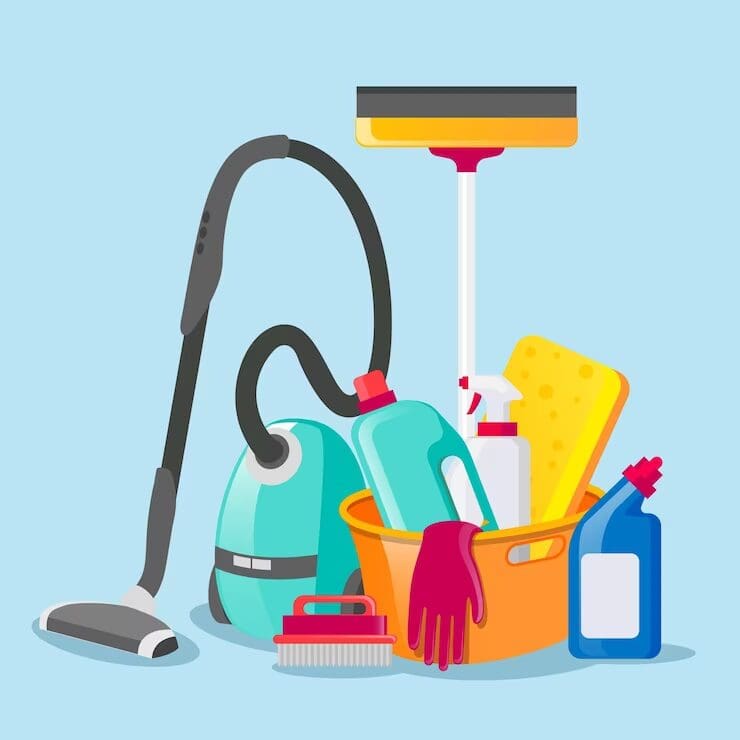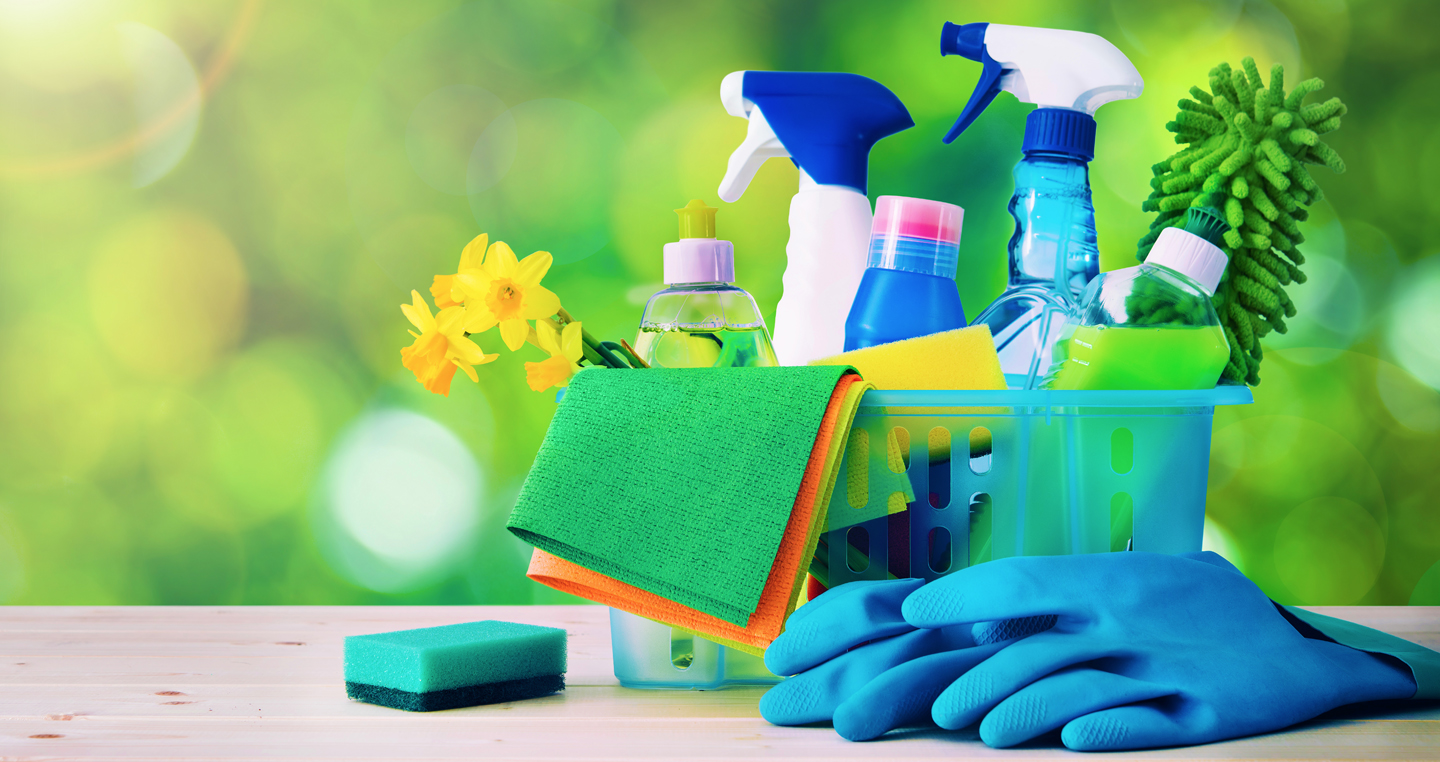Accomplish a Cleaner Home with These Everyday Cleaning Tips: Defrosted and Cleaned Every Few Months and Much more
Recognizing the Demand for Thoroughly Disinfecting and Sterilizing Regularly Touched Surfaces in High-Traffic Areas
In the world of public health and security, the precise sanitation and sanitization of often touched surfaces in high-traffic areas stand as vital measures in avoiding the spread of hazardous pathogens. The importance of this method expands far beyond mere sanitation, delving into the world of condition prevention and neighborhood health. By checking out the different elements of surface sanitation, from the threats connected with neglecting cleansing protocols to the reliable techniques that can be utilized, a clearer understanding arises of the crucial function these techniques play in protecting public health. As we browse this discussion, it comes to be evident that the effects of extensive surface area sanitation resound not just within the confines of a particular atmosphere yet also reverberate on a broader range, influencing the wellness and security of individuals throughout diverse communal setups.
Importance of Surface Area Sanitation
Stressing the extensive disinfection of high-traffic surface areas is important in preserving a hygienic atmosphere and protecting against the spread of hazardous pathogens. High-touch surfaces such as door takes care of, light switches, lift buttons, and counter tops function as breeding premises for bacteria and infections. Regular disinfection of these surface areas is imperative to lower the threat of contamination and transmission of health problems.
By carrying out a robust disinfection protocol, services and organizations can develop a much safer atmosphere for staff members, site visitors, and clients. Appropriate surface sanitation not only minimizes the spread of contagious conditions however also infuses confidence in the sanitation and safety and security of the premises. This proactive method shows a commitment to wellness and wellness, which is particularly essential in high-traffic areas where the possibility of direct exposure to pathogens is increased.
In addition, surface area disinfection plays a crucial duty in general infection control methods. Incorporated with hand hygiene techniques, wearing masks, and maintaining physical distancing, thorough sanitation of high-touch surface areas forms a comprehensive protection versus the transmission of dangerous microbes. Prioritizing surface area sanitation is a vital component of an all natural method to health and wellness in common rooms.
Dangers of Ignoring Cleansing Practices
Ignoring detailed sanitation of high-traffic surface areas considerably increases the danger of viral and bacterial contamination, posing a significant hazard to the health and safety of people frequenting these rooms. Failure to apply correct cleansing practices can result in the build-up and spread of unsafe microorganisms, consisting of infections and microorganisms, on regularly touched surfaces such as doorknobs, handrails, lift switches, and countertops.

In addition, overlooking the significance of complete cleaning not just compromises the wellness of people however additionally undermines initiatives to maintain a clean and sanitary environment. It is vital to acknowledge the significance of correct sanitation protocols in avoiding the spread of infections and guarding public health and wellness.
Efficient Sanitation Techniques
To maintain ideal cleanliness and decrease the danger of contamination on high-traffic surface areas, using reliable disinfection approaches is essential. One of the most common and effective disinfection approaches is making use of chemical disinfectants.
One more effective method is using UV-C light. UV-C light has been shown to be efficient in eliminating a vast variety of microorganisms by interrupting their DNA framework, therefore preventing them from reproducing. Nonetheless, it is necessary to use UV-C light correctly, guaranteeing that the appropriate intensity and exposure time are used to achieve the preferred sanitation outcomes.
Furthermore, using heavy steam cleaning as a read sanitation method can be extremely effective, especially on surfaces that are heat-resistant. Heavy steam can permeate permeable surfaces and kill microorganisms, viruses, and other pathogens efficiently. When using heavy steam cleaning, it is very important to ensure that the surface gets to the required temperature level for an adequate amount of time to guarantee appropriate disinfection.
Effect On Public Health And Wellness
The upkeep of high criteria of tidiness and sanitation on high-traffic surfaces plays a critical function in protecting public health and wellness. Regularly touched surface areas in locations with high footfall, such as doorknobs, hand rails, elevator switches, and bathroom facilities, function as reproducing premises for damaging virus. Falling short to effectively sanitize these surfaces can bring about the fast spread of infectious diseases within communities. By executing thorough sanitation protocols, the danger of transmission of viruses, bacteria, and various other bacteria can be considerably minimized.
Efficient sanitation practices not just safeguard people from dropping ill however also contribute to the total well-being of society. Public health authorities stress the value of keeping tidy environments to stop outbreaks and consist of the spread of ailments. In high-traffic areas like airport terminals, colleges, medical facilities, and mass transit systems, the effect of rigorous disinfection procedures can not be downplayed. Prioritizing the sanitization of frequently touched surface areas is an aggressive method to advertising public wellness and improving the security of people in shared areas.
Executing Routine Cleaning Procedures
Promptly setting up and adhering to a constant timetable of cleansing methods is paramount for preserving the cleanliness and safety of high-traffic surface areas. Routine cleansing protocols are essential in stopping the accumulation of germs and virus on frequently touched surface areas, especially in locations with high foot web traffic. By executing a systematic approach to cleansing, companies can properly decrease the risk of illness transmission and create a healthier setting for workers, customers, and the public.
To establish an efficient cleansing schedule, it is essential to determine high-traffic areas that require constant attention. These locations might include doorknobs, hand rails, review elevator switches, restroom facilities, and common tools. Applying a routine cleaning regimen that targets these surface areas multiple times a day can substantially reduce the spread of dangerous germs and infections.
Additionally, making use of ideal cleansing agents and disinfectants is vital to making certain that surface areas are extensively sanitized. Regular training of cleaning personnel on correct cleansing methods and the value of adherence to the cleansing schedule is also crucial in keeping a hygienic environment. By prioritizing constant cleansing procedures, companies can promote the health and wellness and health of people who interact with these high-traffic surface areas.

Conclusion
In final thought, it is crucial to focus on extensive sanitation and sanitization of regularly touched surface areas in high-traffic areas to stop the spread of dangerous pathogens and keep public health. It is crucial to more acknowledge the value of preserving clean surfaces in high-traffic areas to ensure the health of the neighborhood.
In the world of public health and safety and security, the meticulous sanitation and sanitization of often touched surface areas in high-traffic areas stand as paramount steps in stopping the spread of harmful pathogens. By exploring the numerous elements of surface area disinfection, from the risks linked with overlooking cleaning methods to the efficient approaches that can be used, a clearer understanding arises of the important function these techniques play in protecting public wellness.In addition, using vapor cleaning as a sanitation method can be very effective, particularly on surface areas that are heat-resistant. When utilizing heavy steam cleaning, it is important to guarantee that the surface area gets to the needed temperature for an adequate quantity of time to guarantee proper sanitation.
In verdict, it is important to focus on thorough sanitation and sanitization of often touched surfaces in high-traffic areas to prevent the spread of unsafe pathogens and preserve public health and wellness.